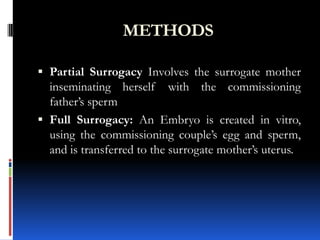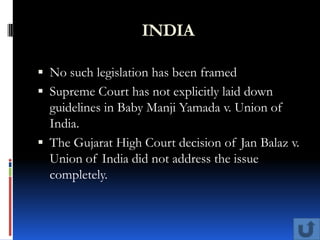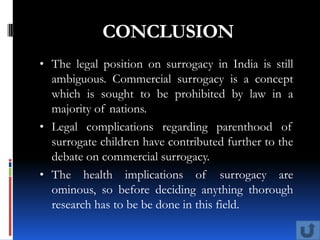The document discusses various aspects of surrogacy including definitions, methods, assisted reproductive techniques used, legal issues around commercial surrogacy in different countries, proposed legislation in India, health issues related to surrogacy, and legal issues around surrogacy contracts. It analyzes topics such as parenthood determination, enforceability of surrogacy contracts, and their constitutionality. The conclusion states that the legal position on surrogacy in India remains ambiguous and more research is needed on its health implications before decisions are made.



























